Running after a Tattoo: Risks and tips for getting back into running
Author:
Unlock your full potential by engaging with our experts and community! Have questions about your fitness journey or looking for expert advice on weightlifting techniques? Don’t hesitate — leave a comment below and Oleksandr Zagrebelnyi will provide a personalized answer and insights to help you reach your goals.
Torokhtiy is reader-supported. Some links are affiliate links, and we may earn a commission at no extra cost to you. See our disclosure page for details.
Are you wondering when it is safe to start running after a tattoo? While the complete healing process of a new tattoo takes anywhere between 15-30 days, exercising too soon can cause extra damage and discomfort.
If you would like to know how long should I wait to workout after a tattoo, look no further! This article explains the risks, considerations, and tips for safely starting to run with your new tattoo. Take some time to read up so that you can feel confident in how best to care for yourself while keeping your body art looking great!
Can you exercise after getting a tattoo? – Wait 48 to 72 hours before running after tattoo, and consult with medical professionals or tattoo artists for further guidance. Avoid direct sun exposure and sweating, wear loose clothing, and protect against bacteria exposure when exercising with a new tattoo.
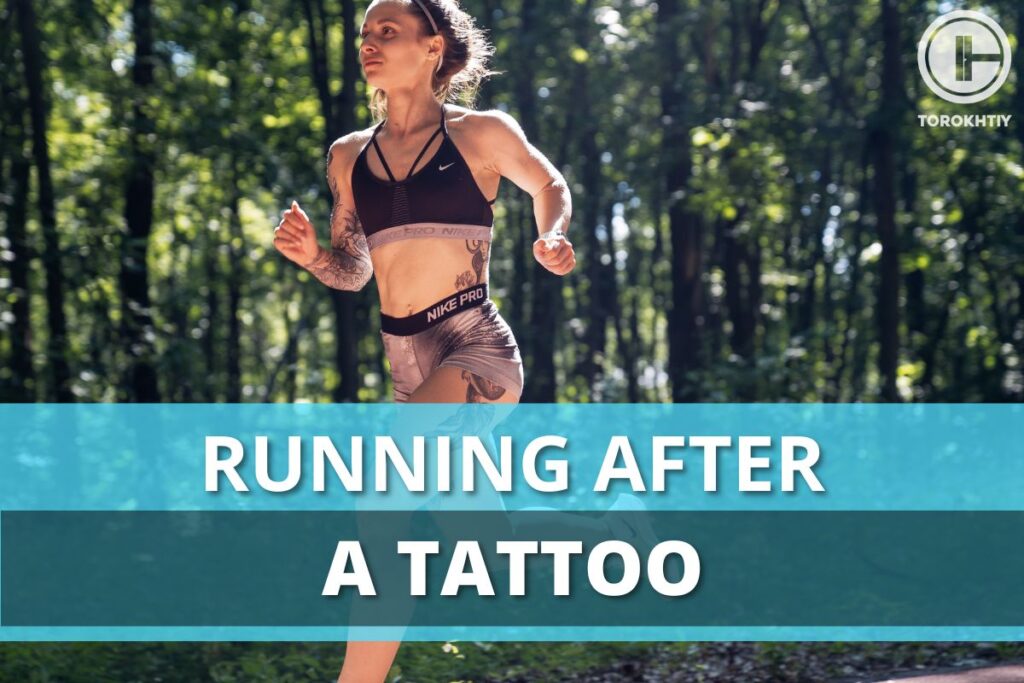
What to Consider Before Running After a New Tattoo?
Exercising after getting a tattoo is something that should not be taken lightly. It is essential to allow the tattoo enough time to settle and heal properly before engaging in any physical activity, especially high-intensity exercise.
Risks of Exercising Too Soon
When the skin has recently been pierced, it is still vulnerable to infection and sun damage, due to its open pores, which make it more susceptible to the spread of bacteria or other allergens.
This increased vulnerability not only puts your tattoo in danger, but also increases your chances of developing an infection. This is especially true if you’re engaging in activities that involve heavy sweating or coming into contact with germs, such as those you can encounter when working out in the gym after a tattoo.
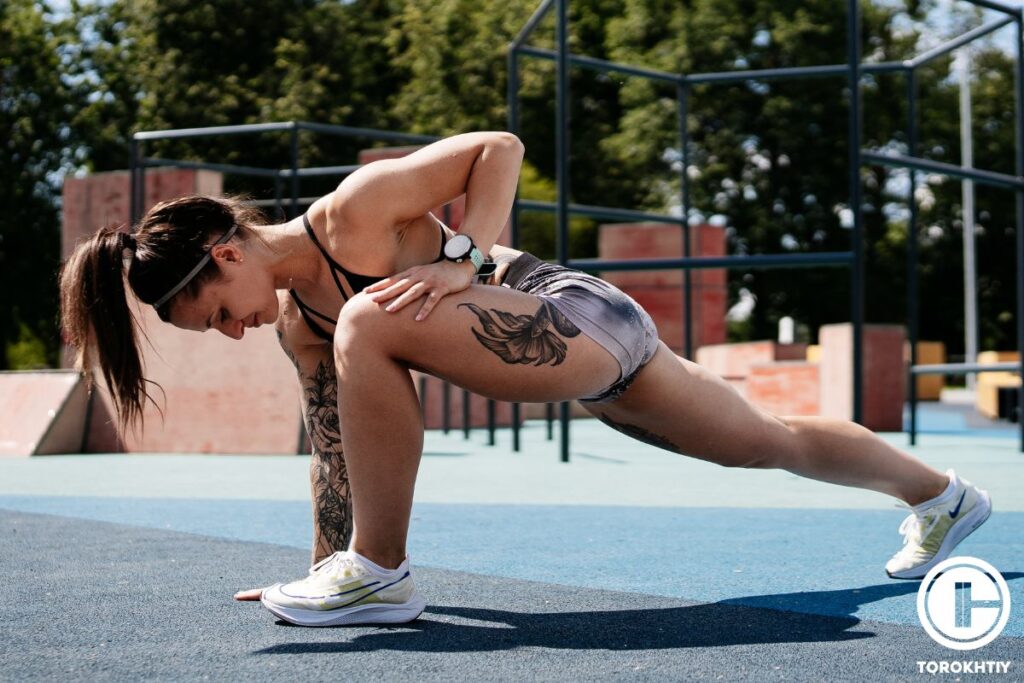
Exercising immediately after a tattoo can also cause tearing along freshly inked line work and damage already healed ink within layers of skin tissue. It may leave unpleasant scarring, as well as fading away existing colors more quickly than would be seen with proper aftercare.
How Long Should I Wait to Work Out or Run after a Tattoo?
New tattoos need time to heal fully before being exposed to any kind of physical activity. It is important for you to check with your medical provider or tattoo artist before starting any exercise routine.
So, can you run after getting a tattoo? While most professional tattoo artists recommend waiting 48-72 hours before exercising, the complete healing process of a new tattoo can take up to 2-6 weeks.
During the healing process, it is important to take certain precautions to ensure that the tattoo can properly heal without complications or risk of infection.
You should wait at least 48 hours after getting a tattoo before engaging in any strenuous activity, such as running. This helps minimize blood flow and possible irritation of the newly inked area, while also allowing some time for inflammation to reduce naturally.
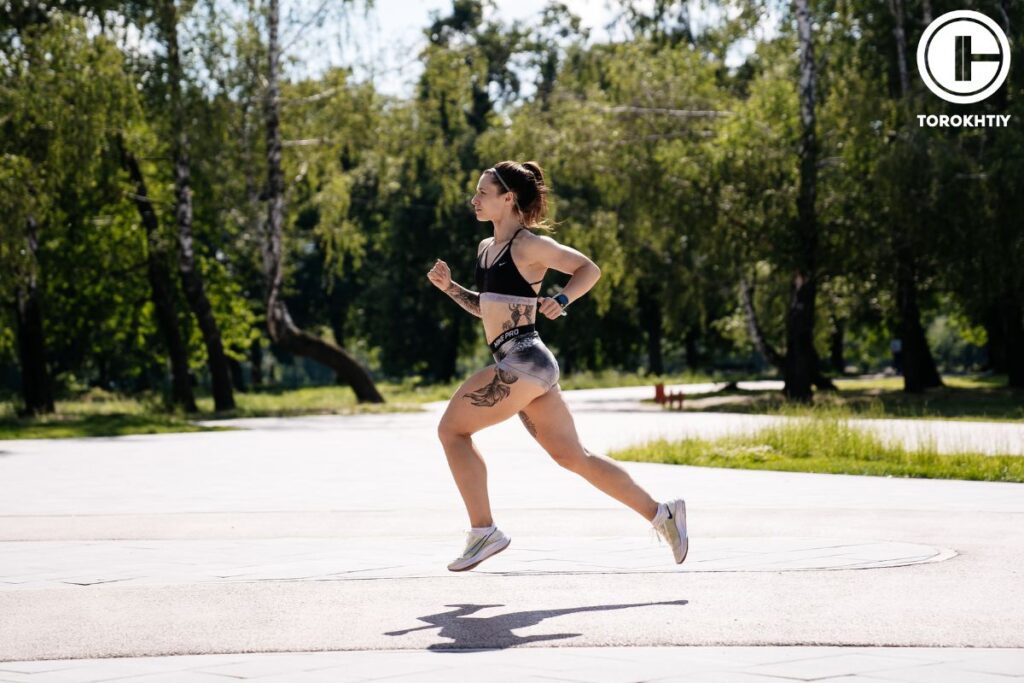
Runners often ask, “Can I run after getting a tattoo on my leg?? Tattoo professionals suggest waiting 2 to 3 days before engaging in vigorous exercise, since there’s still some risk that your tattoo could get infected if you put too much strain on it or expose it to dirt and bacteria.
Is It Possible to Work Out After Getting a Tattoo?
Yes, it is possible to exercise after getting a tattoo, when done properly and with caution. Each sport has its own set of considerations when deciding when to safely start exercising.
For instance, weightlifting may aggravate or stretch the skin during healing, and swimming exposes the tattoo to excessive bacteria. Running several days after getting a tattoo can be tolerated, but it is a good idea to cover the area with sunscreen or protective clothing and avoid excessive sweating for optimal results.
What Types of Exercises Can Be Done With a New Tattoo?
Low-impact exercises like yoga or walking are recommended, as they do not place too much stress on the new tattoo. Resistance training and high-intensity interval training should be limited for at least 2 weeks. Let’s discuss this in more detail.
1. Low-Impact Exercises Safe for Tattoos
For runners who have just gotten a tattoo, there are low-impact exercises they can do to get their body moving without putting too much strain on the area. Walking and light jogging at a slow pace are great options for keeping your cardiovascular health in check without causing any damage to the healing skin.
Yoga and Pilates are other exercises that can be practiced after getting a tattoo—just make sure there’s no excessive stretching or pressure applied directly onto the area.
An easy bike ride can give you a good option for cross-training, while still protecting your new ink from further damage.
2. Exercises to Avoid or Modify
You should avoid certain full-body and contact exercises, such as cardio classes and HIIT workout, since they put too much pressure on your new tattoo, which can cause tearing of the skin and fade the colors over time. Fresh tattoos don’t like excessive sweating, so you need to avoid any activity that makes you soaking wet with sweat.
Activities such as weightlifting should also be avoided or done with extra precautions by covering the tattoo so as to avoid any friction against clothing or equipment.
How to Run Safely With a New Tattoo and Take Care of It?
Here are 4 simple tips that can help you protect your new tattoo from any damage while running:
1. Cover the Tattoo
Freshly inked tattoos are especially vulnerable to damage due to the healing process still underway, so taking extra caution when exposing them to sunlight is extremely important.
Covering up new tattoos with clothing like long-sleeved shirts, hats, or wraps can prevent damage and fading of pigment colors.
2. Wear Loose Clothing
It is important to wear loose-fitting clothing after getting a tattoo, as tight garments may rub and cause irritation while running. This can lead to potential damage or disruption of the healing process, resulting in poor quality results.
Furthermore, wearing material that fits tightly around a new tattoo can cause excessive stretching of the skin in that area, increasing the risk for damage. On top of protecting your ink from damage, wearing loose-fitting clothing will also help ease any discomfort that is caused by rubbing.
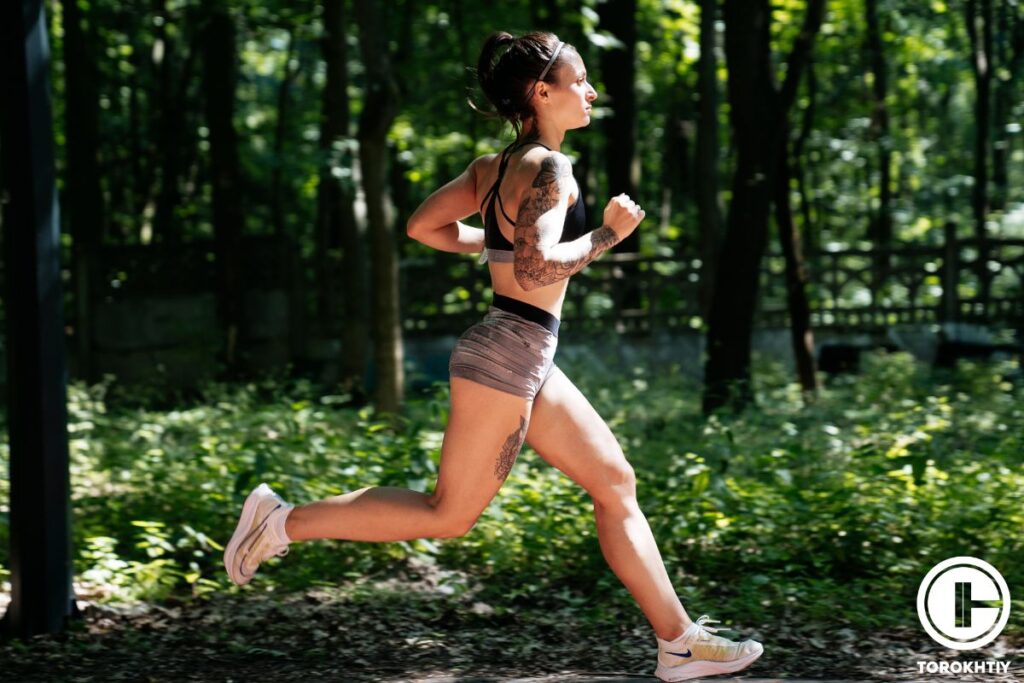
3. Avoid Excessive Sweating and Stretching of the Skin
Sweating too much can significantly delay the healing process and lead to potential complications, such as infection or fading of the ink. High-intensity running can cause sweat to run over the tattoo and carry bacteria, which increases the risk of infection.
To reduce these risks, give your body some time to heal before participating in high-impact activities like running again.
4 Ensure Proper Cleaning and Moisturizing
As an experienced runner, you likely know that good hygiene is key to optimizing performance. The same applies when it comes to your new tattoo. Proper cleaning and moisturizing are the best way to keep the tattoo healthy and protect it from infection.
Tips From the Champ
When washing away excess blood and ink, use a mild, fragrance-free soap, as it is gentler on the skin than those with fragrances or dyes. Avoid scrubbing or rubbing the area harshly with a towel. Simply patting dry is enough.
Running Coach Nike Run Club Kyiv
To help prevent irritation or damage, opt for hypoallergenic soap and moisturizer instead of regular brands. It’s also important to apply moisture-sealing product two to three times daily, especially when running, in order to protect against cracking due to sweat buildup around the tattooed area.
Hoka Bondi 8
- Material: Breathable and supportive mesh upper
- Sole Material: Full-length EVA midsole for maximum cushioning
- Outsole (tread feature): Durable rubber outsole with a unique lug pattern
- Drop: 4mm
- Season: Suitable for all seasons
- Special Features: Exceptional cushioning and comfort
- Size: Available in various sizes
- Type: Maximum cushioning running shoe
If you want excellent running or walking shoes or just footwear you’ll be comfortable in, you can’t go wrong with the Hoka Bondi 8.
It’s been upgraded and now they have lighter, softer materials and a new extended heel design. The heel design gives a super soft, balanced feeling from th emoment your heel hits the ground to when you push off with your toes.
As far as the weight goes, it’s around 10.80 ounces, and the heel drop is 4 mm. They’re not too heavy and the lower drop is a good balance between cushioning and feeling connected to the ground.
The Bondi 8 is focused on cushioning and keeps things simple. There’s a good amount of support without any extra stuff that you don’t really need and that would only jack up the price. Take the rear crash pad, for example – it makes for a soft, smooth ride, which is perfect if you like to run outdoors.
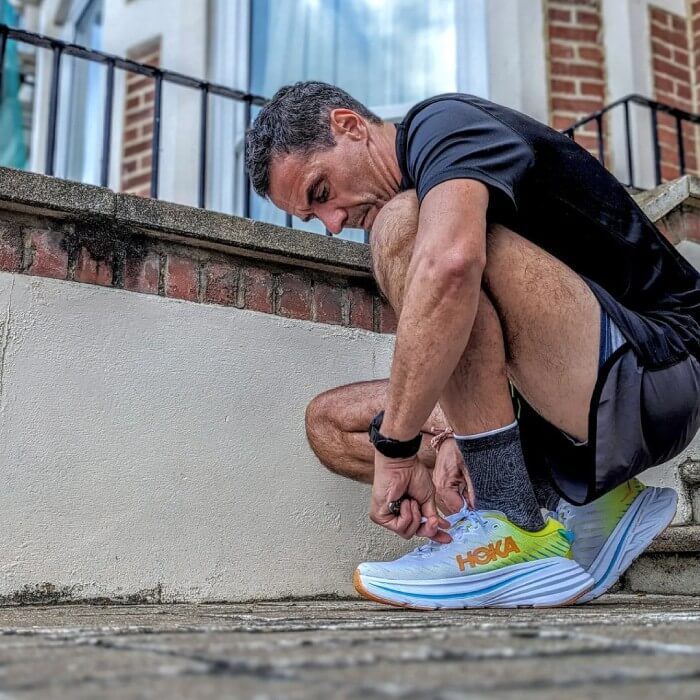
The upper part is made of engineered mesh, which is breathable and keeps your feet cool and dry. The tongue and collar have memory foam and mold to your foot shape. All of these features make the fit snug but flexible, which is exactly what you would want.
The Bondi 8 is eco-friendly because it uses recyclable materials in parts like the mesh and the sockliner. Plus, the shoes are completely vegan, which (if that’s important to you) is nice!
Frequently Asked Questions About Running After Getting a Tattoo
Is It OK to Run After Getting a Tattoo?
Yes, it is possible to run after getting a new tattoo. It’s recommended that you wait at least 48 hours before running after your last tattoo session, and up to 72 hours if the tattoo is particularly large or placed on an area of your body that experiences considerable amounts of movement when running.
Can I Run and Sweat With a New Tattoo?
While most people can return to physical activities 2 to 3 days after receiving their fresh ink, it may trigger an adverse reaction to the health and appearance of the tattoo. Excessive sweating with a new tattoo can result in serious skin irritation or infections.
Final Thoughts on Running After Getting a New Tattoo
For runners who are planning to return to running after getting a tattoo, it is important to wait for at least 48 to 72 hours and be mindful of the sensations experienced during exercise, as it may cause irritation or damage.
In addition, avoid activities that involve excessive sweating and stretching of the skin, such as weightlifting or high-intensity running.
When can you workout after a tattoo? Consult with a healthcare professional or the tattoo artist for advice on when to start running after getting a new tattoo. Some runners may find that their tattoos have healed enough within 2 weeks to return to their normal running routine. However, everyone’s healing process is different, so it is important to receive personalized recommendations.
When did you start running after getting a tattoo? Please share your experience and tips in the comments below.
Also read:
References:
- National Library of Medicine. Wound Healing Phases. Last Update: June 12, 2023. https://www.ncbi.nlm.nih.gov/books/NBK470443/
- Mayo Clinic. Tattoos: Understand risks and precautions https://www.mayoclinic.org/healthy-lifestyle/adult-health/in-depth/tattoos-and-piercings/art-20045067
- FDA. Tattoos & Permanent Makeup: Fact Sheet https://www.fda.gov/cosmetics/cosmetic-products/tattoos-permanent-makeup-fact-sheet
- University of Michigan. Body Art: What You Need to Know before Getting a Tattoo or Piercing https://uhs.umich.edu/bodyart
- Perry M, et al. Need for improved public health protection of young people wanting body piercing: evidence from a look-back exercise at a piercing and tattooing premises with poor hygiene practices, Wales (UK) 2015. Epidemiol Infect. 2018;146(9):1177-1183 https://www.ncbi.nlm.nih.gov/pmc/articles/PMC9134299/
- Photos by Torokhtiy Media Team.
Why Trust Us?
With over 20 years in Olympic weightlifting, strength training, nutrition coaching, and general fitness our team does its best to provide the audience with ultimate support and meet the needs and requirements of advanced athletes and professional lifters, as well as people who strive to open new opportunities and develop their physical capabilities with us.
By trusting the recommendations of our certified experts in coaching, nutrition, and sports training programming, as well as scientific consultants, and physiotherapists, we provide you with thorough, well-considered, and scientifically proven content. All the information given in the articles concerning workout programming, separate exercises, and athletic performance, in general, is based on verified data.
The product testing process is described in more detail here.
Oleksandr is a running coach and member of the Nike Run Club coaching team for 8 years. A participant in national and international competitions at distances from one kilometer to the ultra trail. Owner of mountain trail running camps. Nowadays Oleksandr is responsible for creating running training programs for athletes of various levels, coaching personally offline and online, conducts trail running camps in the mountains, participates in competitions.



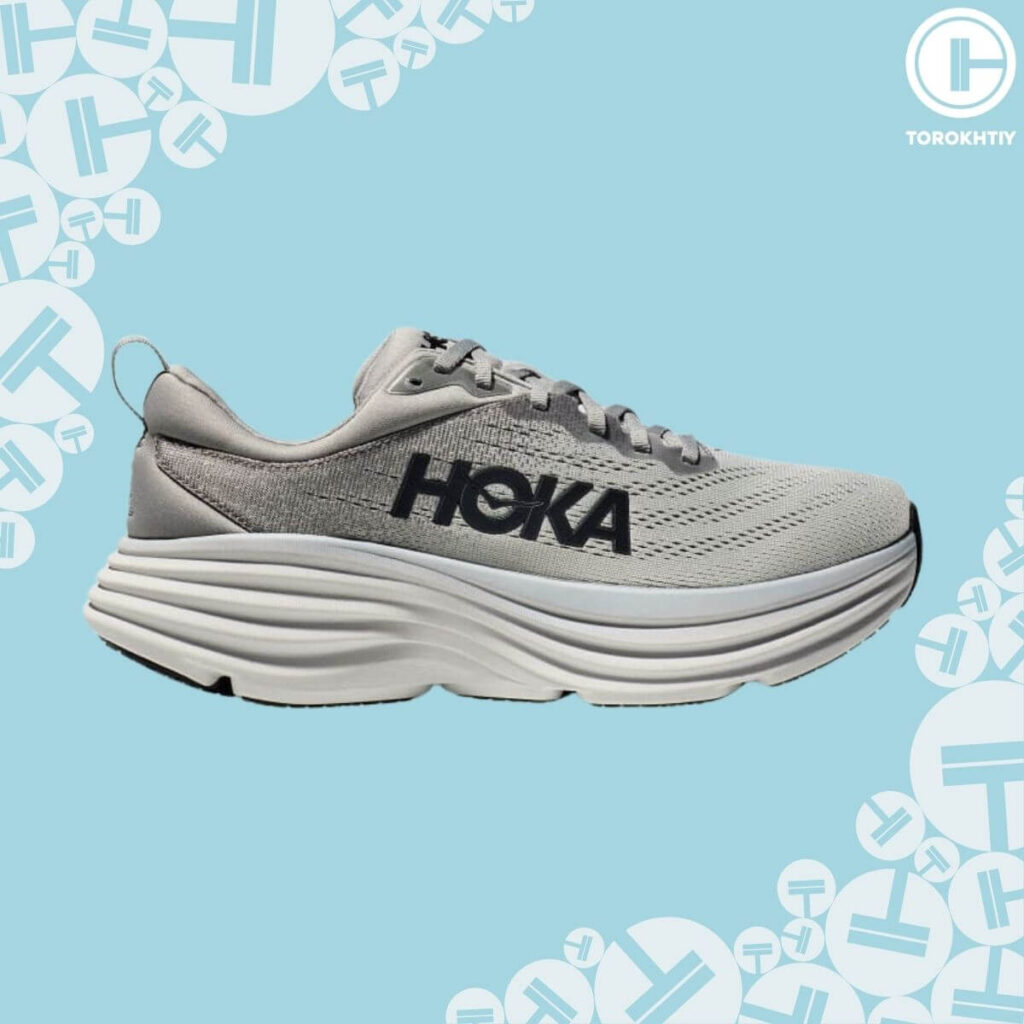
Still have questions after reading our article? Unlock your full potential by engaging with our experts and community! Don’t hesitate — leave a comment below and Oleksandr Zagrebelnyi will provide a personalized answer and insights to help you reach your goals.